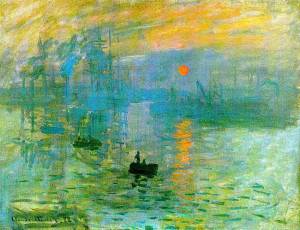The theme for my virtual exhibit is The Seasons of Life. I decided to go with this theme because I love the four seasons and each season is unique. All of the works in the exhibit are connected to one of the seasons. I have chosen Julian Beever and Andy Goldsworthy as the artists and have selected three works from each of them.
Julian Beever is a British artist known for creating optical illusions through street drawings. He is a chalk-artist who draws on pavement surfaces and has worked in the US and numerous countries all over Europe. In addition to his street drawings, he also paints murals, oil paintings, and creates collages. For my theme The Seasons of Life I chose a few of Beever’s oil paintings that fit in with my theme.
Andy Goldsworthy is an innovative British artist who creates his works by using natural materials such as snow, ice, leaves, clay, etc. In addition to being a well known environmental artist who will use his bare hands, teeth, and saliva to help put together his works, he is also a photographer and sculptor. Goldsworthy likes to express his travels through nature and capture his creations on camera.

Julian Beever, Spring on the Campsite, Could not find date, Mons Belgium
Julian Beever’s Spring on the Campsite is one of his many oil paintings. This painting has a spring feeling to it and makes you want to be out there sitting on the chairs enjoying the weather. It connects to my theme The Seasons of Life because it portrays springtime and the beauty of the spring season. Beever gives a great depiction of what a great season spring is. I love this painting because of the detail and the setting. I love when all the snow is gone and the weather gets warmer and this painting makes me want to be there.

Julian Beever, Michaelmas daisies in sunshine, Could not find date
I believe this painting connects with summer because the flowers are blooming and the sun is shining. This painting by Beever is a great depiction of the beauty of summer which is one of The Seasons of Life. I like the setting of this painting. I enjoy the daises in the front but I like the yard in the back with the trees in the background. I wish I could be relaxing in a yard like this on a nice summer day.

Julian Beever, Watermill in the Spring, Could not find date, Mons Belium
Beever’s Watermill in the Spring is another great depiction of springtime. This connects with my theme because of the season it portrays. I really like this work by Beever because of the view it presents. It feels as if a person is looking in on this great house and yard and wanting to be there. You can see people working in the background and I like the faded look of the house and the beauty of the yard. The clear blue sky makes for a great setting and a perfect day at a great house.

Andy Goldsworthy, Icicle Star, joined with saliva, Could not find date
This work by Goldsworthy connects with my theme The Seasons of Life in that it portrays winter with the Icicle Star and the snowy background. Winter is a great season and Goldsworthy did an amazing job with this work. He used saliva to help keep this together and I find this work stunning. I can’t imagine how much time it took him to do this but it is amazing.

Andy Goldsworthy, Autumn Cherry Leaves, Could not find date
This connects with my theme of the seasons because the autumn cherry leaves represent the fall season. It is very simple but it is a great depiction of the beauty of the fall season. The leaves are changing color and falling on the ground and Goldsworthy does a great job putting this piece together.

Andy Goldsworthy, Snow Circles, December 19, 1987, Izumi-Mura, Japan
This last work is my favorite. The snow circles represent the winter season and fall in line with my theme of the seasons of life. It could be viewed as very simple but Goldsworthy does a great job with all the snow circles and drawing the viewer’s attention to the circles. It makes the eye look at the circles and wonder what’s behind it. Snow is the natural material he uses and he does a great job making this out of nothing. Snow Circles is a great depiction of the beauty of winter.
Works Cited:
http://en.wikipedia.org/wiki/Andy_Goldsworthy
http://www.morning-earth.org/artistnaturalists/an_goldsworthy.html
http://en.wikipedia.org/wiki/Julian_Beever
http://users.skynet.be/J.Beever/pave.htm
http://www.rwc.uc.edu/artcomm/web/w2005_2006/maria_Goldsworthy/TEST/index.html













